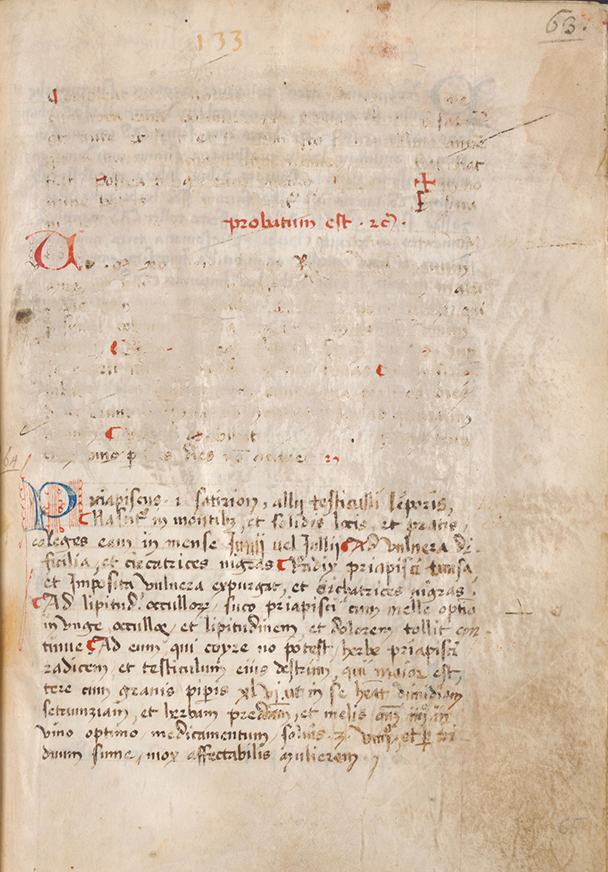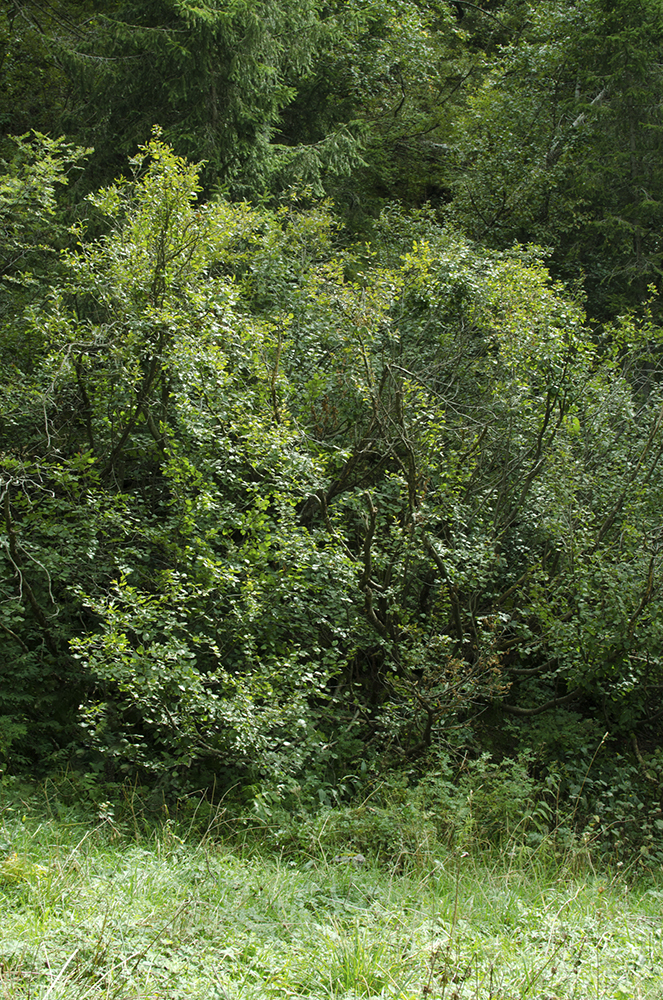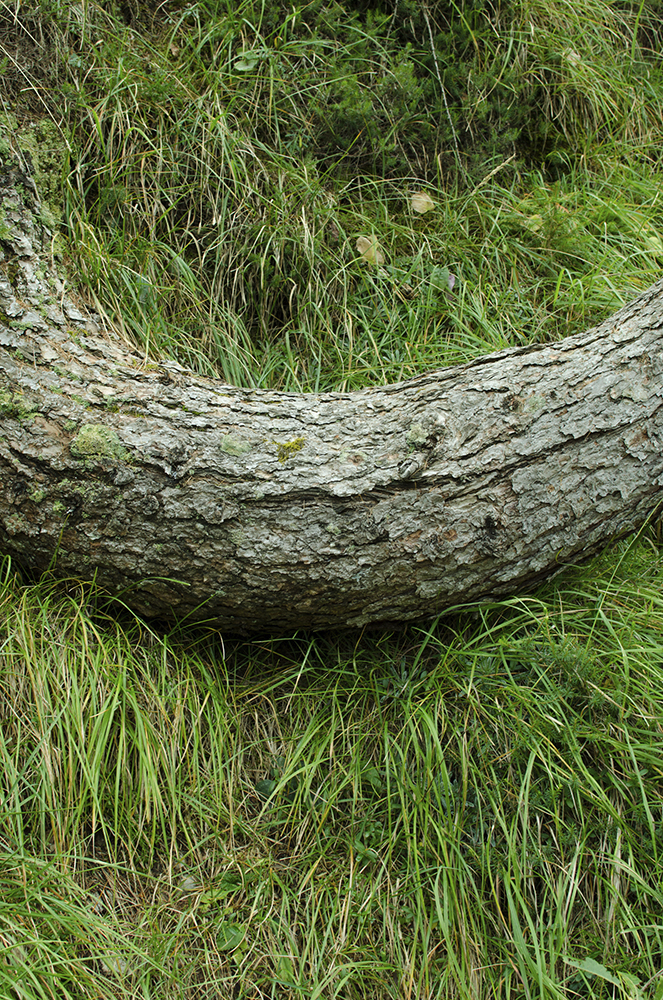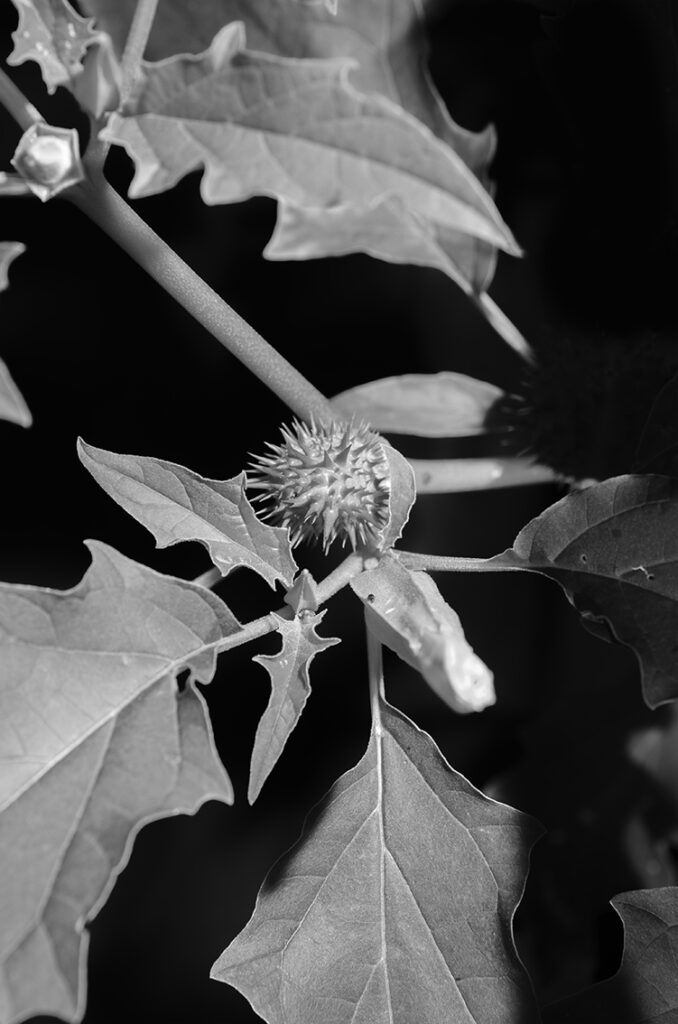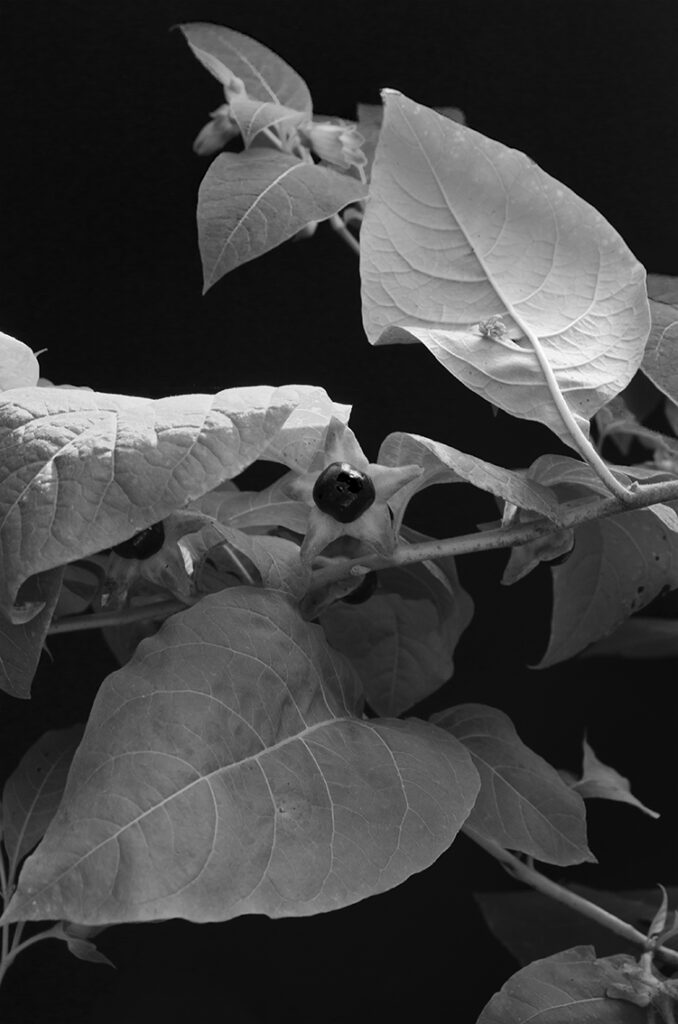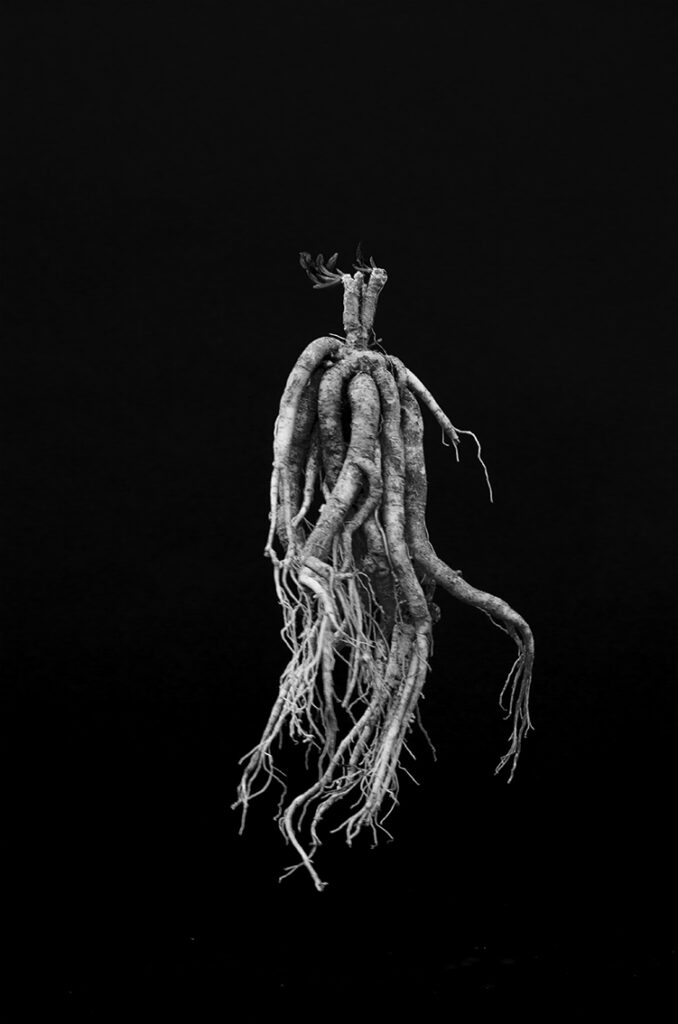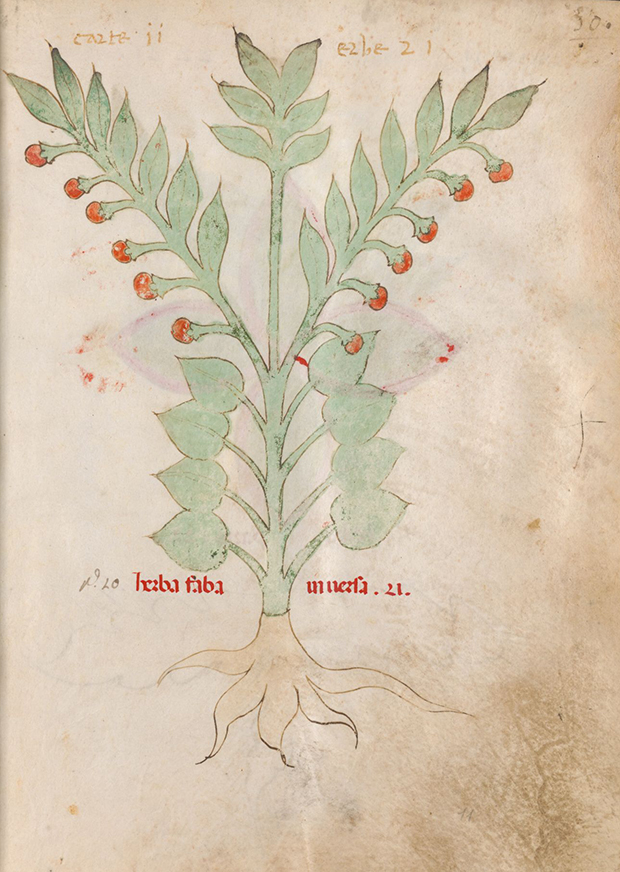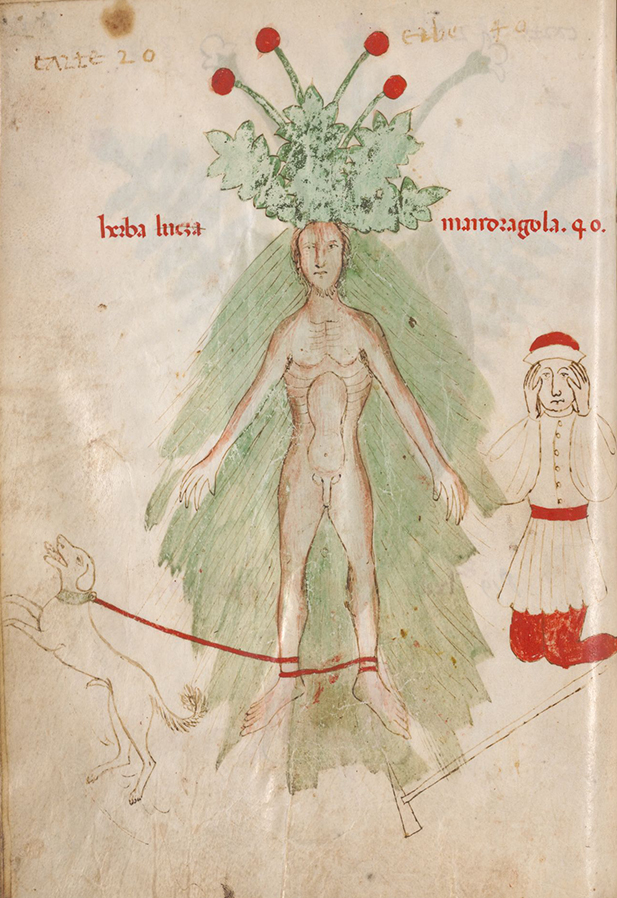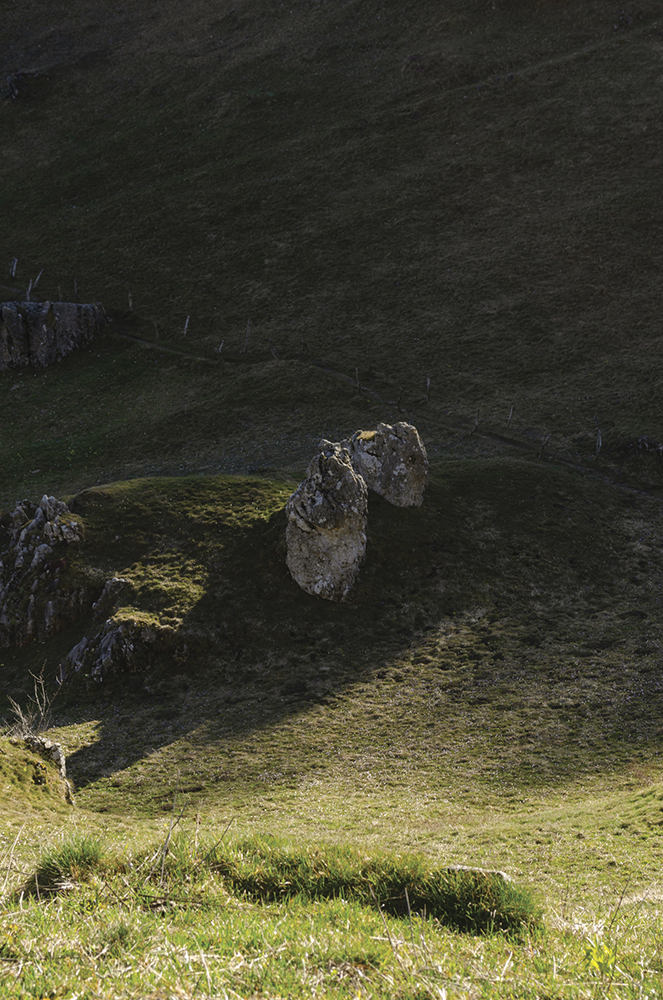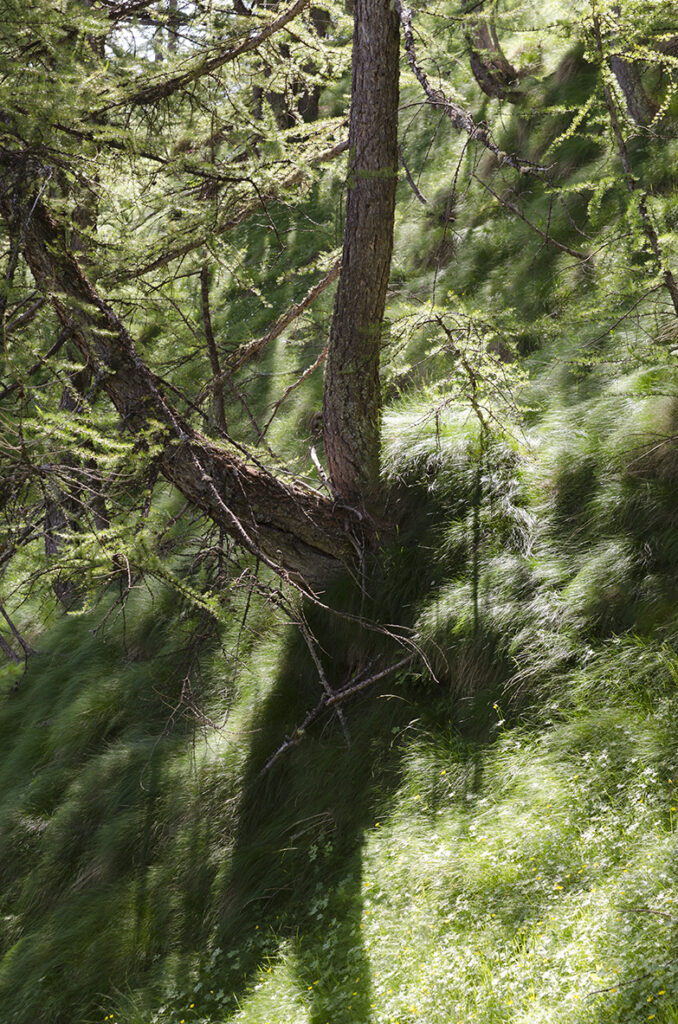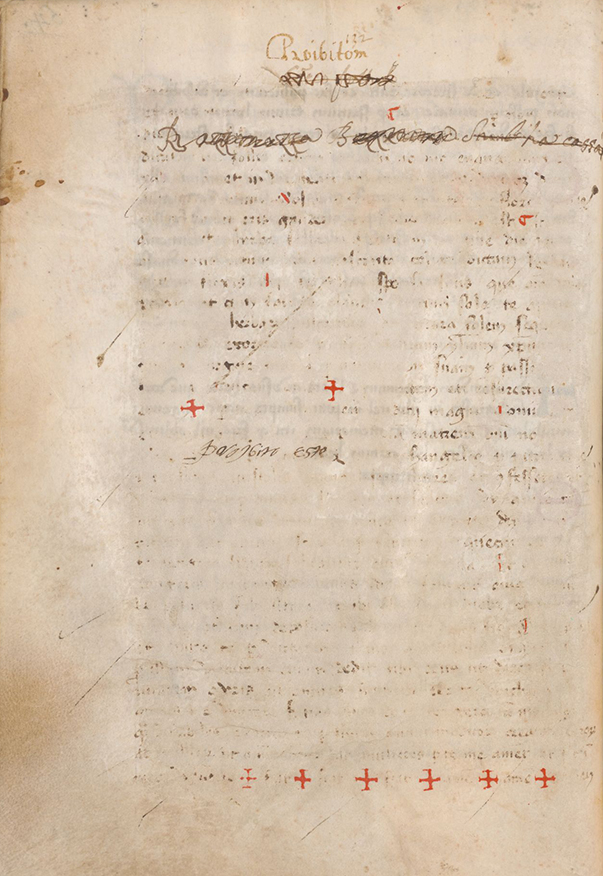digital photography/ scanned image from manuscript / 2024
Between the 14th and 17th centuries in Europe, the use of psychotropic plants—particularly those from the Solanaceae family, such as Atropa Belladonna and Mandragora—was widespread in rural areas and forests. Knowledge of these plants intertwined popular traditions, magic, and botany. Rich in toxic alkaloids, they were used in various contexts, from escapism in times of hardship to alchemical experimentation.
A significant example is an anonymous manuscript preserved in the University Library of Pavia, analyzed in 2000 by scholar Vera Segre Rutz. This 14th-century herbal not only documents the medicinal use of plants but also reveals their magical applications, such as preserving precious metals or performing rituals linked to cosmic forces. The illustrations, stylized to be understood only by initiates, and sections later censored by ecclesiastical authorities, highlight the ambiguous perception of these practices.
At the heart of this historical and cultural phenomenon was a belief in natural magic as a means of transcending nature’s appearances through the transformation of both body and consciousness. Mydriasis—the dilation of the pupils caused by alkaloids—was associated with altered states of perception, evoking both wonder and unease.
This project, conceived as both an editorial and exhibition endeavor, explores mydriasis as a physical and symbolic consequence of Solanaceae use. It situates the phenomenon within a specific historical and cultural framework, drawing inspiration from the unique contents of a 14th-century herbal.
